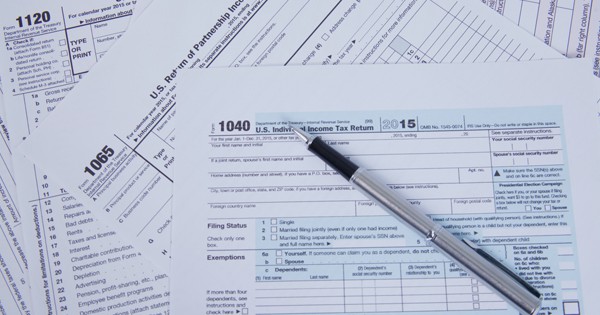This summer, Congress passed the One Big Beautiful Bill Act (OBBBA) into law, which made the largest set of federal taxA tax is a mandatory payment or charge collected by local, state, and national governments from individuals or businesses to cover the costs of general government services, goods, and activities. changes since the passage of the Tax Cuts and Jobs Act (TCJA) in 2017.
Our new interactive tax calculator tool helps demonstrate how the OBBBA tax provisions will impact taxpayers in different scenarios in 2026. The calculator allows users to compare how different sample taxpayers fare or to input a custom taxpayer.
The tax calculator compares tax liability under two scenarios for tax year 2026. First, the calculator shows a taxpayer’s liability if Congress had done nothing and allowed the TCJA to expire as scheduled. Next, the calculator shows a taxpayer’s liability in 2026 under the OBBBA’s tax provisions. The difference between the two illustrates the tax decrease (or, in a few cases, increase) a taxpayer would see under OBBBA compared to the prior status quo.
2026 Tax Calculator
About the Tax Calculator
The calculator includes most aspects of the federal individual income taxAn individual income tax (or personal income tax) is levied on the wages, salaries, investments, or other forms of income an individual or household earns. The U.S. imposes a progressive income tax where rates increase with income. The Federal Income Tax was established in 1913 with the ratification of the 16th Amendment. Though barely 100 years old, individual income taxes are the largest source code, except provisions related to business and self-employed income, including new deductions created by the OBBBA for qualifying tip and overtime income, seniors, and qualifying auto loan interest payments.
For purposes of the new OBBBA deductions, amounts entered by the user are assumed to qualify for the deductions under the law, other than applicable income limits and aggregate amounts deductible, which are applied in the calculator on the user’s behalf based on the overall income amounts entered. For example, overtime income entered by a user is assumed to be the premium portion qualifying for the overtime deduction by statute and Treasury guidance.
The Tax Foundation’s tax calculator is intended as an illustrative tool for the estimation of the OBBBA’s impact on example taxpayers. It does not fully represent all potential tax scenarios and liabilities and should not be used for tax preparation purposes. The tax calculator is for educational use only.
The TCJA simplified individual income taxes and reduced tax rates across the income spectrum, but most individual provisions were scheduled to expire at the end of this year. The OBBBA made those tax cuts permanent. In doing so, 62 percent of taxpayers avoided a scheduled tax increase from the TCJA expirations.
By making the TCJA individual tax changes permanent, the OBBBA lowered marginal tax rates, widened tax bracketsA tax bracket is the range of incomes taxed at given rates, which typically differ depending on filing status. In a progressive individual or corporate income tax system, rates rise as income increases. There are seven federal individual income tax brackets; the federal corporate income tax system is flat., doubled the child tax credit and zeroed out personal and dependent exemptions, nearly doubled the standard deductionThe standard deduction reduces a taxpayer’s taxable income by a set amount determined by the government. Taxpayers who take the standard deduction cannot also itemize their deductions; it serves as an alternative., and limited several itemized deductions and the alternative minimum tax.
The OBBBA diverges from pure individual TCJA permanence by slightly increasing the size of the standard deduction, changing the inflationInflation is when the general price of goods and services increases across the economy, reducing the purchasing power of a currency and the value of certain assets. The same paycheck covers less goods, services, and bills. It is sometimes referred to as a “hidden tax,” as it leaves taxpayers less well-off due to higher costs and “bracket creep,” while increasing the government’s spendin adjustment for parts of the ordinary income tax rates and brackets, and increasing the maximum size of the child tax credit and indexing it to inflation. It also added new, temporary deductions for qualifying tipped and overtime income, along with new deductions for seniors and payments of auto loan interest.
Not every change the OBBBA made was a tax cut. For example, the OBBBA made permanent the TCJA limitations on certain itemized deductions, including a tighter cap on deductible mortgage interest. The law also introduced new limitations on specific itemized deductions, such as a new 0.5 percent of income floor on the charitable deduction and a new haircut on the value of itemized deductions overall for taxpayers in the top tax bracket.
The OBBBA also placed a $40,400 cap on itemized deductions for state and local taxes paid for all but the highest earning taxpayers in 2026 (those taxpayers face a phaseout down to the $10,000 cap in place from 2018 to 2025), increasing taxable income for higher-income taxpayers living in high-tax states but providing a tax cut compared to the pre-2026 SALT cap of $10,000 for all taxpayers.
Taken together, the net effect of all OBBBA tax changes reduced tax burdens for most taxpayers compared to Congress not acting this year. Relative to prior law in 2026, taxpayers will see an increase in after-tax incomes worth about 5.4 percent on average. The bottom 20 percent of earners will see the smallest boost at 2.6 percent in after-tax income, rising to about 6.3 percent for taxpayers between the 60th and 80th percentiles of earnings (see Figure 1).
Stay informed on the tax policies impacting you.
Subscribe to get insights from our trusted experts delivered straight to your inbox.
Subscribe
Share this article





























